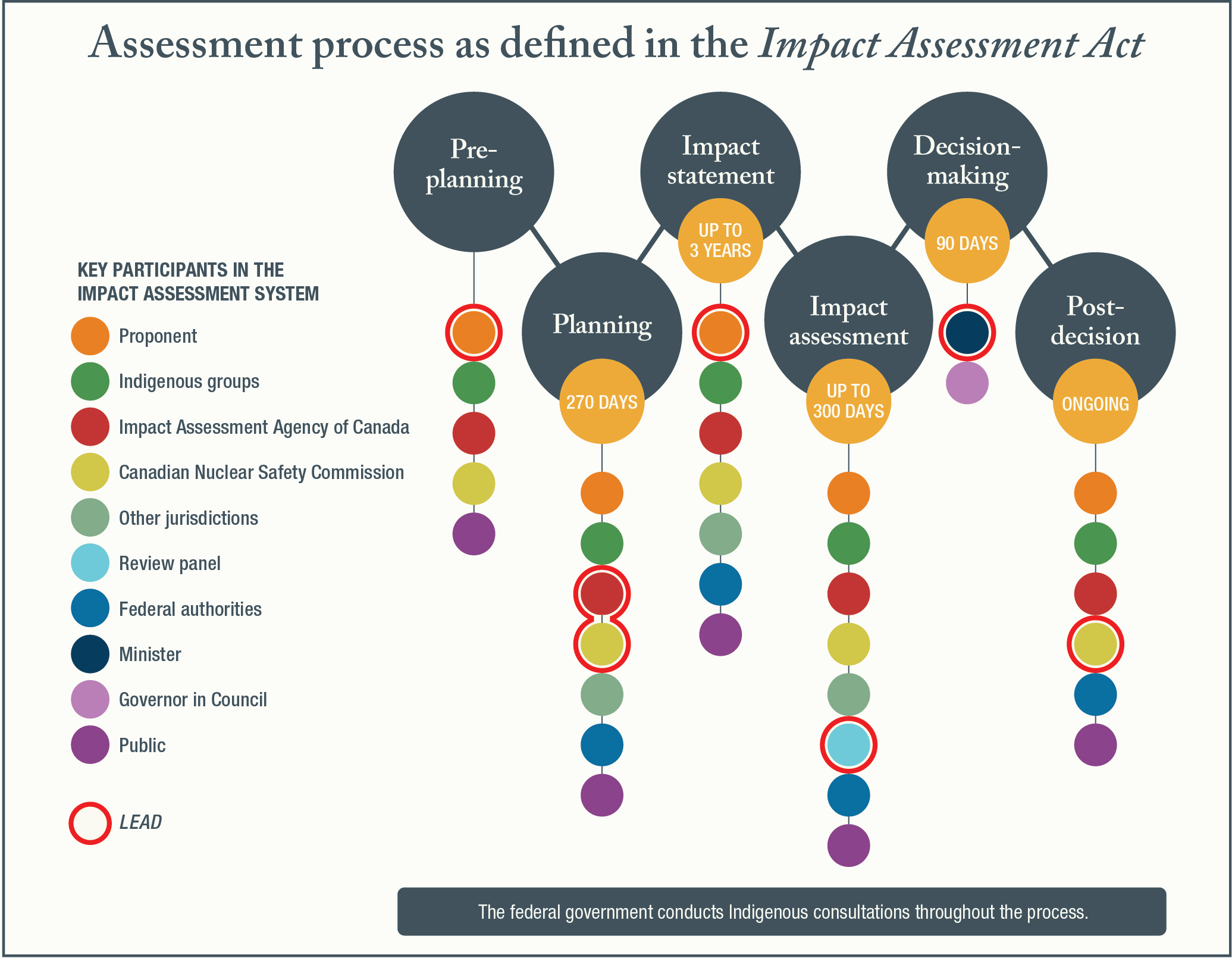
Regulatory decision-making process
The NWMO will:
- Prepare, with community input, the submissions to start the regulatory decision-making process; and
- Start the regulatory decision-making process with partner communities.
Protecting people and the environment for generations to come remains at the heart of all our work. Once we complete the site selection process, we will begin the rigorous regulatory decision-making process, through which the NWMO’s understanding of the safety of the repository will be independently confirmed.
We expect to formally notify the regulators that we will be starting the regulatory decision-making process shortly after site selection and target our initial submissions for 2025.
To ensure we are well-prepared, the NWMO monitors and adapts our activities to all regulatory changes that affect the project. For example, we will adapt our plans to meet any changes that arise from the revision of the Impact Assessment Act. We will also adapt to adhere to the guidance issued by the regulators, as well as best practices as developed on other projects that are in regulatory decision-making processes.
We will also continue to engage with the Canadian Nuclear Safety Commission (CNSC) in preparation for the eventual submission of a licence application, consistent with the terms of a special project arrangement already in place. Within the next few years, we expect the CNSC will issue additional guidance on what information it will need to independently confirm the safety of the proposed deep geological repository for used nuclear fuel.
In the period from 2024 to 2028, the NWMO will also:
- Solicit input from municipal and Indigenous communities on deliverables in support of the integrated impact assessment;
- Continue to collect information and work with communities and others to enhance our understanding of the current local and regional conditions, including collaboration with Indigenous communities to seek alignment of Indigenous Knowledge with this understanding as a foundation for the environmental, social, health and economic assessments;
- Building on the work completed on safety from a social perspective up to site selection, continue to work with community members to understand and respond to their issues and concerns respecting the safety of the repository, including how we will mitigate risk of harm to the environment in our designs and programs;
- Support the preparation of the initial project description and assessments needed for the regulatory process;
- Obtain from the Impact Assessment Agency of Canada (IAAC), the CNSC and other regulatory authorities clarity regarding the requirements of the Impact Assessment Act and implementation under the act;
- Initiate the federal impact assessment and CNSC licensing process; and
- Prepare and submit the reports to achieve the Site-Specific Impact Assessment Guidelines and Permitting Plan from the IAAC.
The regulatory decision-making plan
Once a site has been selected in 2024, the NWMO will shift our focus to the regulatory decision-making process that will allow construction of the deep geological repository to move forward if approvals are granted.
All regulatory decisions will involve independent review by federal and provincial regulators and an appointed review panel. The process will be open and transparent and involve members of the public who choose to participate.
There are two integrated regulatory decision-making processes:
- An impact assessment under the Impact Assessment Act; and
- Licensing under the Nuclear Safety and Control Act.
Together, these processes will help the federal government assess various aspects of the project, including safety, sustainability, adverse effects, national security and whether it is in the public interest.
The NWMO and host communities for the project will undertake a work program, studying the potential impacts of the project, including cumulative effects, and identifying any necessary mitigations. Overall, our target is to have received the necessary regulatory approvals to transition to site preparation by 2030.

